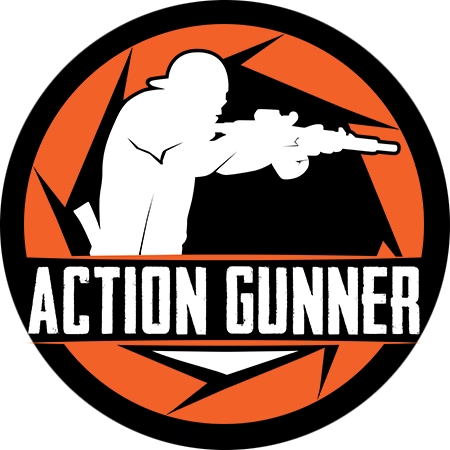Perfecting Your Pistol Grip for Better Shooting Performance
When it comes to improving your shooting performance, the grip on your pistol is as crucial as your stance, sight alignment, and trigger control. A proper grip enhances accuracy, control, and the ability to manage recoil. This article delves into the techniques and tips that can help shooters, whether novice or experienced, perfect their pistol grip for better overall performance.
Understanding the Basics of a Good Pistol Grip
Before diving into the nuances, it’s important to understand what makes a good grip. Ideally, a proper pistol grip should allow you to align the barrel naturally with the target, manage recoil with each shot, and quickly return to the target for subsequent shots.
The human hand is capable of a wide range of movements, but for shooting, we want to minimize unnecessary motion. A firm grip on the pistol is essential, but ‘firm’ doesn’t mean ‘tight.’ Over-gripping can cause shaking and tension that detract from accuracy.
The Mechanics of a Proper Grip
The grip begins by placing the web of your shooting hand high on the backstrap of the pistol. This positioning helps to mitigate recoil. Your fingers should wrap comfortably around the grip, with your thumb resting parallel to the frame, not pressing against it.
Your support hand then comes into play, completing the grip. The support hand should cover the exposed portion of the grip, with the fingers of the support hand interlocking or lying alongside the fingers of the shooting hand. The thumb of the support hand can either rest against the frame or lie alongside the shooting hand thumb.
Pressure Distribution
Pressure should be evenly distributed across both hands. If you need to put numbers on it, imagine a 60/40 distribution, with the majority of the pressure coming from the support hand. This allows the shooting hand to stay relatively relaxed for smooth trigger pulls.
Trigger Finger Placement
Your trigger finger—separate from the grip—should reach the trigger with just the pad of the index finger. This allows a straight-back pull with minimal lateral force that could push the gun off target. Depending on the length of the trigger, you will need to play with this positioning a bit.
Consistency is Key
Consistency in your grip is just as important as the grip itself. A consistent grip ensures that each time you draw your pistol, your hand positioning is the same, leading to consistent shots. This requires practice. Dry-firing at home can help build muscle memory without expending ammunition.
Dealing with Recoil
Recoil management is a significant aspect of the pistol grip. With a proper grip, the pistol will lift predictably and return to the target more naturally. This is essential for follow-up shots, especially in competitive shooting.
Adjusting for Hand Size and Pistol Type
Not all hands are the same, and not all pistols are the same. Grips might need to be adjusted based on the size of the shooter’s hand and the type of pistol. For instance, a double-stack magazine will create a wider grip than a single-stack and will generally require a different hand placement for a comfortable, effective grip.
Practice Makes Perfect
Live fire practice at the range is the best way to validate your dryfire reps and refine your grip. Start with slow, deliberate shots, focusing on maintaining your grip through each shot. As you become more comfortable, you can increase your speed, always mindful of maintaining the proper technique. It’s important to take note of any adjustments you needed to make during livefire, taking that back to your dryfire work.
Common Grip Errors
- Too Tight or Too Loose: Finding the right tension in your grip is vital. A grip that’s too tight can cause the gun to shake, while too loose a grip won’t manage recoil effectively.
- Incorrect Support Hand Position: The support hand should not compete with the shooting hand. It should complement the shooting hand’s grip and aid in stability and recoil control.
- Improper Trigger Finger Placement: Too much or too little finger on the trigger can push or pull shots off-target.
- Inconsistency: Changing your grip between shots or sessions can lead to unpredictable results and hinder the development of muscle memory.
Advanced Techniques
For those who have mastered the basics, there are advanced grip techniques that can further enhance shooting performance. For instance, some competitive shooters use a technique known as the ‘thumb-over-thumb’ grip, which can offer even greater control over the pistol, while others will keep a loose thumb on their shooting hand to help reduce excessive interference.
Safety Considerations
Always remember that safety comes first. A proper grip also ensures that your hands and fingers are clear of the slide and muzzle. Never sacrifice safety for the sake of experimenting with grip techniques. Furthermore, make sure to keep ammunition out of the room while putting dryfire reps in at home. Following gun safety rules, always dryfire toward a wall that won’t allow penetration, ie – foundation walls.
In Conclusion
Perfecting your pistol grip is a fundamental part of becoming a proficient shooter. It requires understanding the basics, practicing consistently, and being mindful of common errors. Whether you’re at the range or competing, a solid grip will help you shoot more accurately and handle your pistol with confidence. Take the time to assess your grip and make the necessary adjustments; the results will be worth the effort. Remember, in shooting, as in many other skills, the foundation is crucial—build a strong one with a perfect grip.

